Nonprofit Event Planning: How To Nail It In 10 Simple Steps
 KonfHub
KonfHub
Nonprofit events are the beating heart of meaningful change. They bring together impassioned individuals, rallying for a shared cause.
Yet, let's be real – the rush to put it all together can leave even the most seasoned planners breathless. How many times have we found ourselves racing against the clock, juggling myriad details, all while wishing for more hours in a day?
That's why we're here. Today, we're diving into the world of nonprofit event planning, with an emphasis on:
The benefits of planning a nonprofit event in advance,
10 steps to planning a nonprofit event, and
Additional tips for better nonprofit event planning.
With that said, let’s get right in!
Benefits of planning a nonprofit event in advance
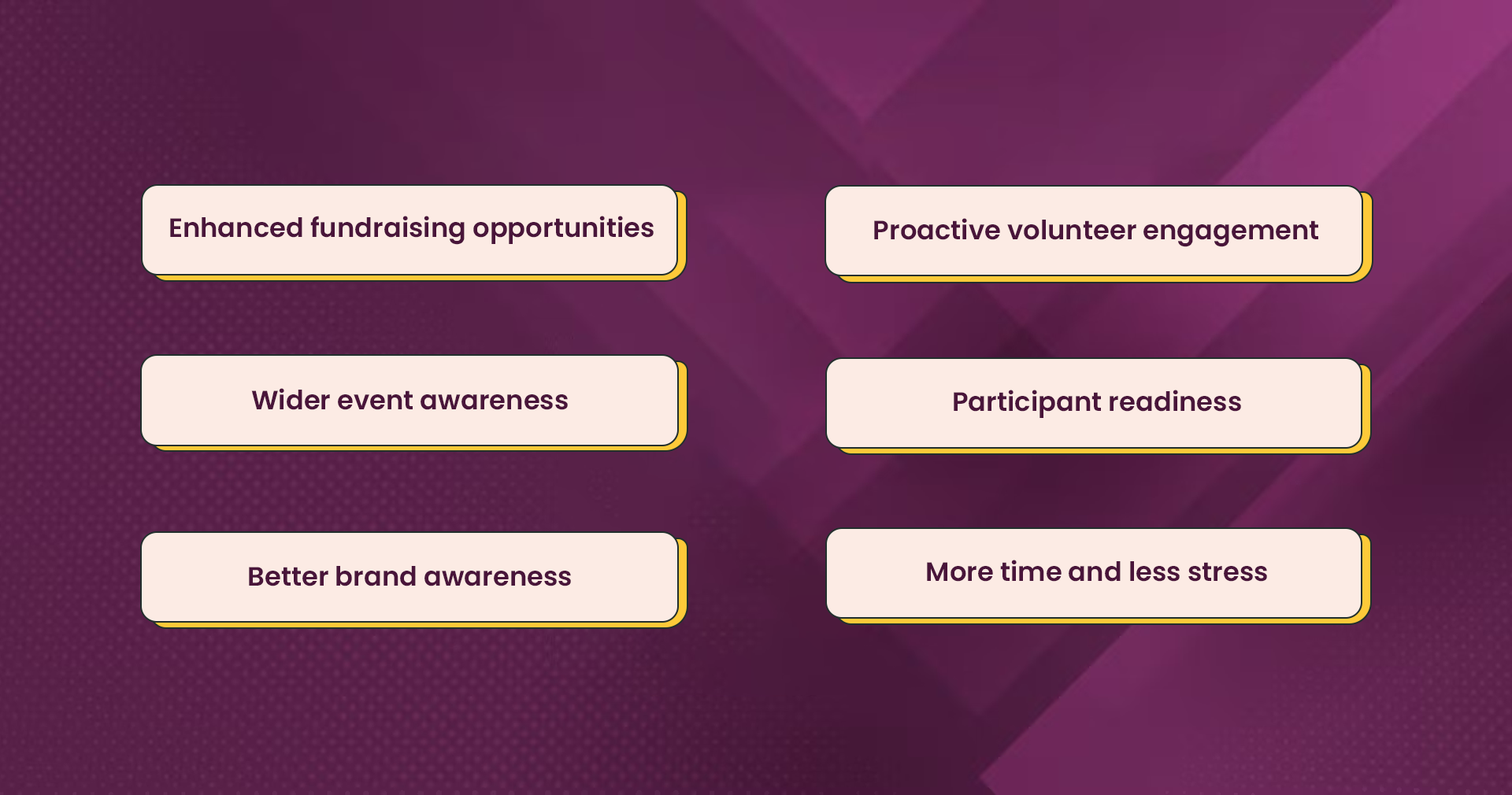
Running a nonprofit event can be a whirlwind, but the secret to success lies in foresight. Here's why planning in advance is your ace in the hole.
Enhanced fundraising opportunities: Early planning opens doors to more substantial donations and sponsorships. It allows for targeted outreach and personalized engagement with potential donors.
Wider event awareness: Time is your ally when it comes to promotion. It enables you to craft a comprehensive marketing strategy, reaching a broader audience and generating more buzz around your cause.
Better brand awareness: A well-organized event reflects positively on your organization's image. With ample time, you can ensure every aspect aligns seamlessly with your mission and values.
Proactive volunteer engagement: Early planning gives you the head start needed to recruit and mobilize volunteers effectively. It allows for thorough training and ensures everyone is on the same page.
Participant readiness: Attendees appreciate a well-prepared event. Having all details ironed out in advance guarantees a smooth experience for everyone involved.
More time and less stress: It's not just about avoiding the nail-biting last-minute rush. Early planning affords you the luxury of troubleshooting and fine-tuning, leading to a more polished event.
How to plan a nonprofit event in 10 easy steps
Organizing a successful nonprofit event involves a strategic approach. Here are ten crucial steps to set you on the path to success.
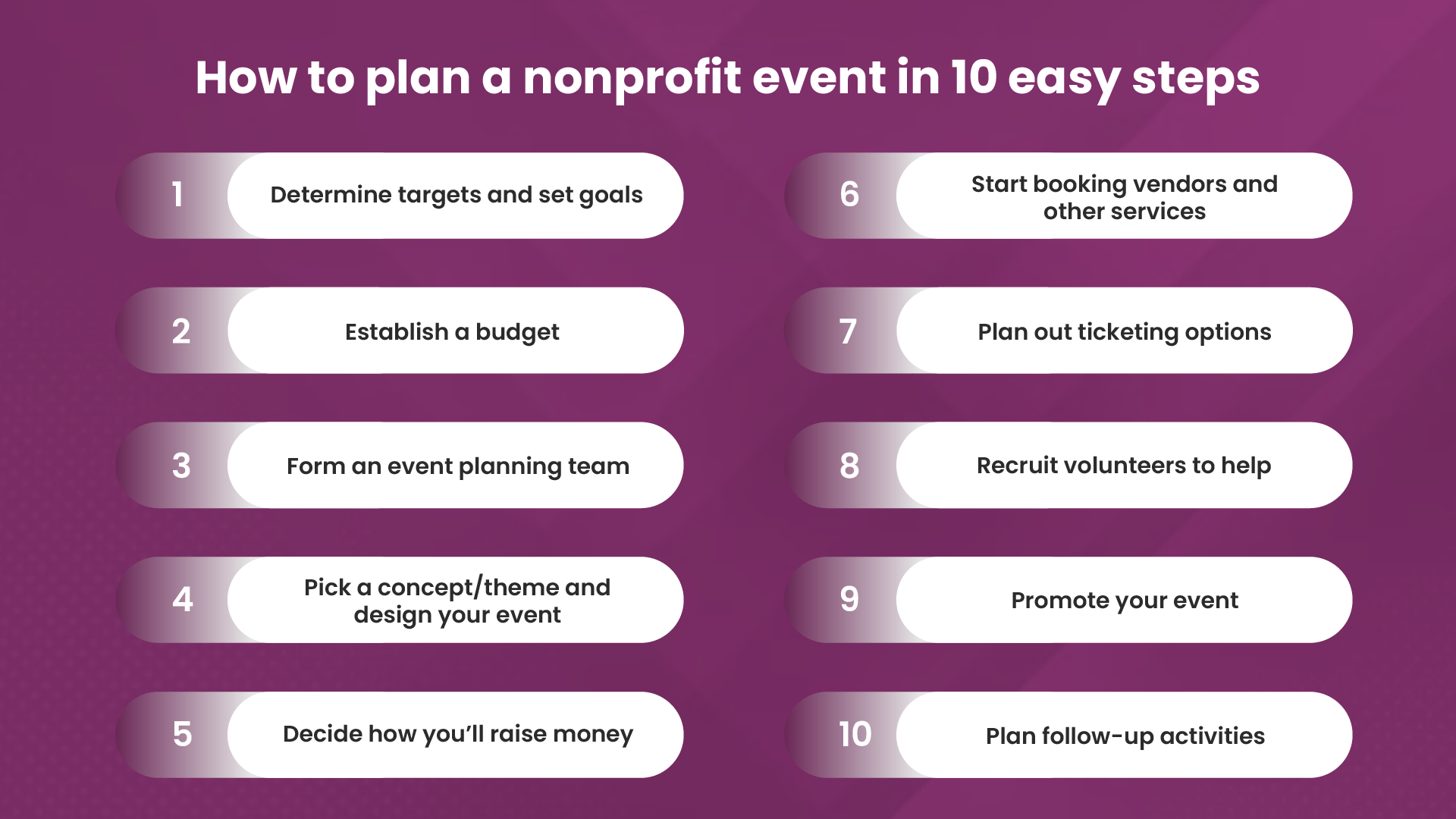
Step 1: Determine targets and set goals
Organizing a successful nonprofit event starts with a clear vision. Define specific objectives, such as fundraising targets, participant engagement goals, or cause awareness milestones. Identify your target audience to tailor the event to their interests.
Establish measurable metrics and a timeline for achieving these goals to maintain focus and urgency throughout the planning process.
Step 2: Establish a budget
A comprehensive budget is the cornerstone of event planning. Identify potential income sources, including donations, sponsorships, ticket sales, and grants.
Simultaneously, compile a list of anticipated expenses, covering everything from venue rental and catering to marketing materials, entertainment, and potential staff salaries.
Allocate a specific budget to each aspect of the event and set aside a contingency fund for unforeseen expenses.
Implementing a robust financial tracking system ensures you stay on course throughout the planning process.
Step 3: Form an event planning team
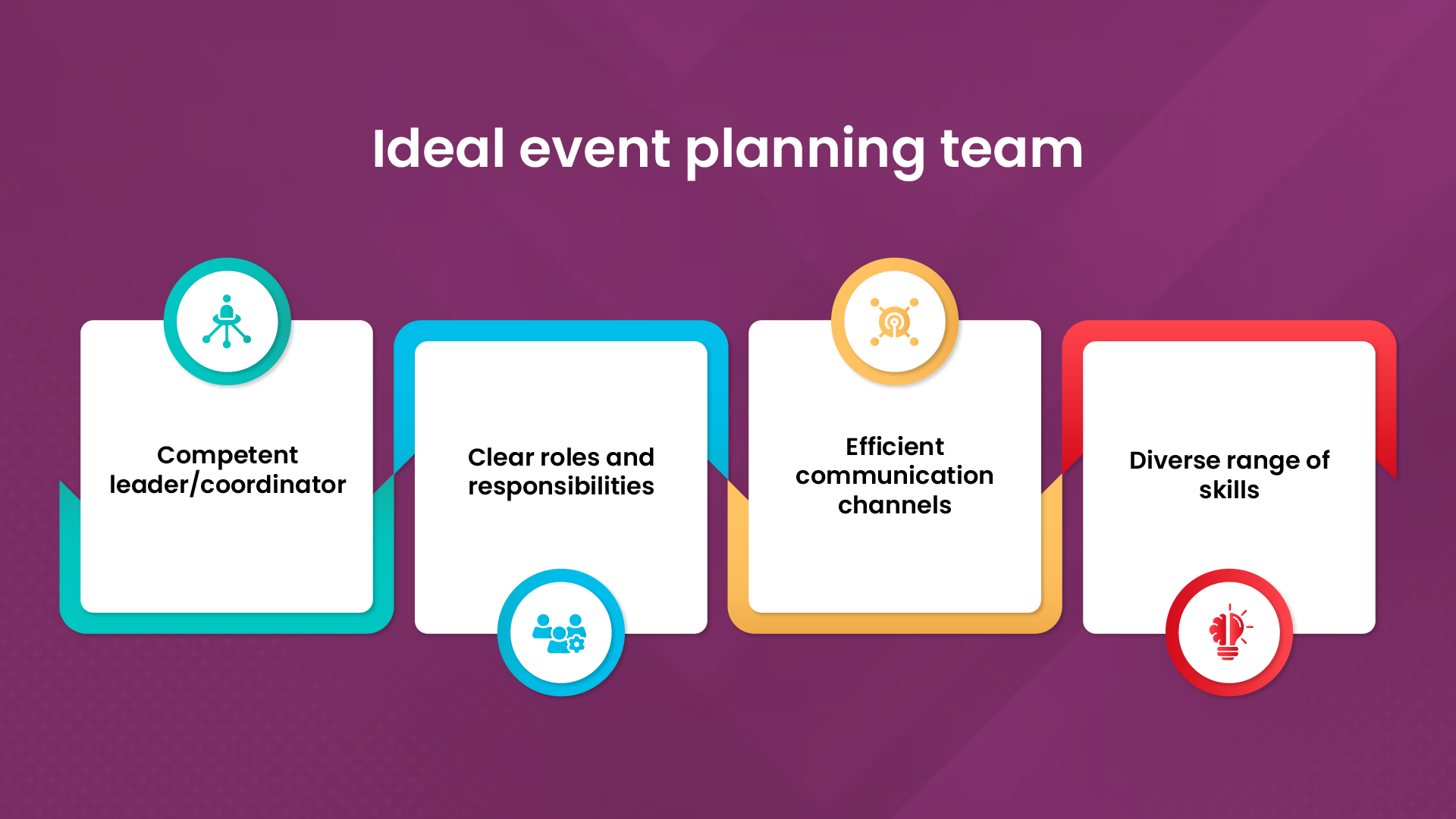
The right team can make or break an event. Define clear roles and responsibilities, ensuring tasks align with individual strengths and expertise.
Establish efficient communication channels, whether it's through email, project management tools, or regular face-to-face meetings, to keep everyone in the loop.
Appoint a leader or coordinator who will oversee the entire planning process and serve as the central point of contact.
Assemble a team with a diverse range of skills, including marketing, logistics, finance, and communication.
Consider recruiting volunteers for specific tasks or roles, and schedule regular team meetings to discuss progress, address challenges, and ensure everyone remains aligned with the event's objectives.
Step 4: Pick a concept/theme and design your event
Choosing a concept or theme is akin to setting the stage for your event's narrative. Consider the cause you're championing and the emotions you want to evoke.
Whether it's a formal gala, a lively charity auction, or a community-centered fair, the theme should resonate with your audience.
Align decorations, color schemes, and activities with this central idea. Encourage your planning team to brainstorm creative elements that enhance the theme's impact.
Step 5: Decide how you’ll raise money
This step involves strategically mapping out your revenue streams.
Will ticket sales be the primary income source, or will sponsorships play a significant role? Perhaps auctions, merchandise sales, or donation stations can supplement funds.
Establish clear pricing structures and sponsorship tiers. Develop persuasive pitches for potential sponsors, highlighting the mutual benefits of collaboration. Consider various avenues to maximize your fundraising potential.
Step 6: Start booking vendors and other services
Now, it's time to bring the logistical pieces together. Identify and reach out to potential vendors for services like catering, audio-visual equipment, decorations, and security.
Request detailed quotes, and carefully review contracts that outline expectations, timelines, and deliverables. Negotiate terms that align with your event's budget.
Maintain meticulous records of all vendor communications and agreements to ensure seamless execution on the day of the event.
Step 7: Plan out ticketing options
Ticketing is a crucial aspect of event planning. Determine the types of tickets you'll offer, such as general admission, VIP passes, or special packages.
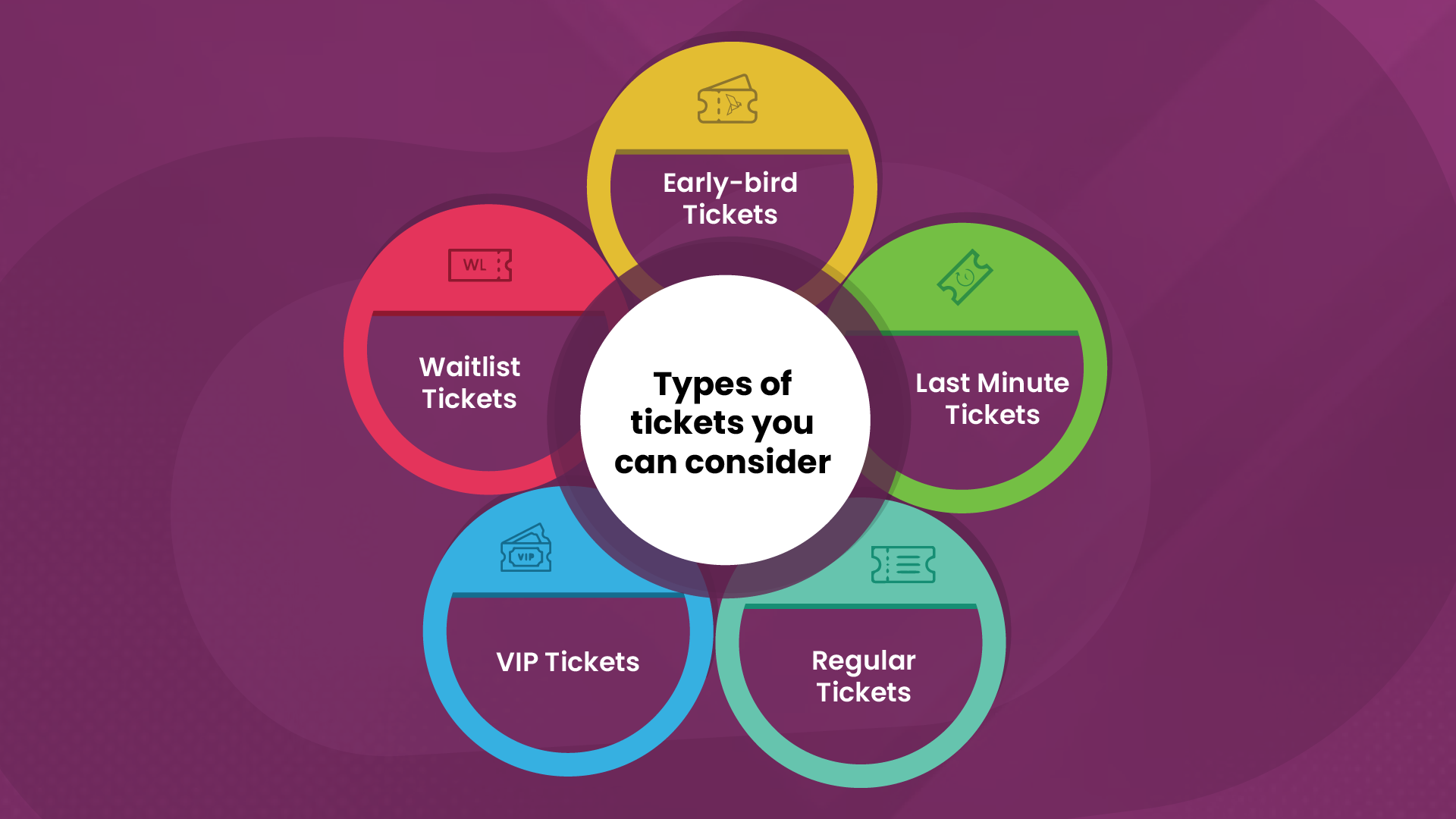
Set prices that align with your fundraising goals and audience affordability. Implement an efficient ticketing system, whether through an online platform, physical sales, or both.
Clearly communicate ticket availability, pricing, and any special perks associated with different ticket tiers.
Click this link if you want to learn more about How To Increase Online Ticket Sales For Any Event.
Step 8: Recruit volunteers to help
Volunteers are the backbone of a successful nonprofit event. Identify roles that require additional support, such as registration, guest assistance, or event setup.
Reach out to your network, community organizations, or dedicated volunteer platforms to enlist help. Provide clear instructions and training sessions for volunteers to ensure they understand their responsibilities.
Express gratitude for their time and effort, and consider incentives like certificates or tokens of appreciation.
Step 9: Promote your event
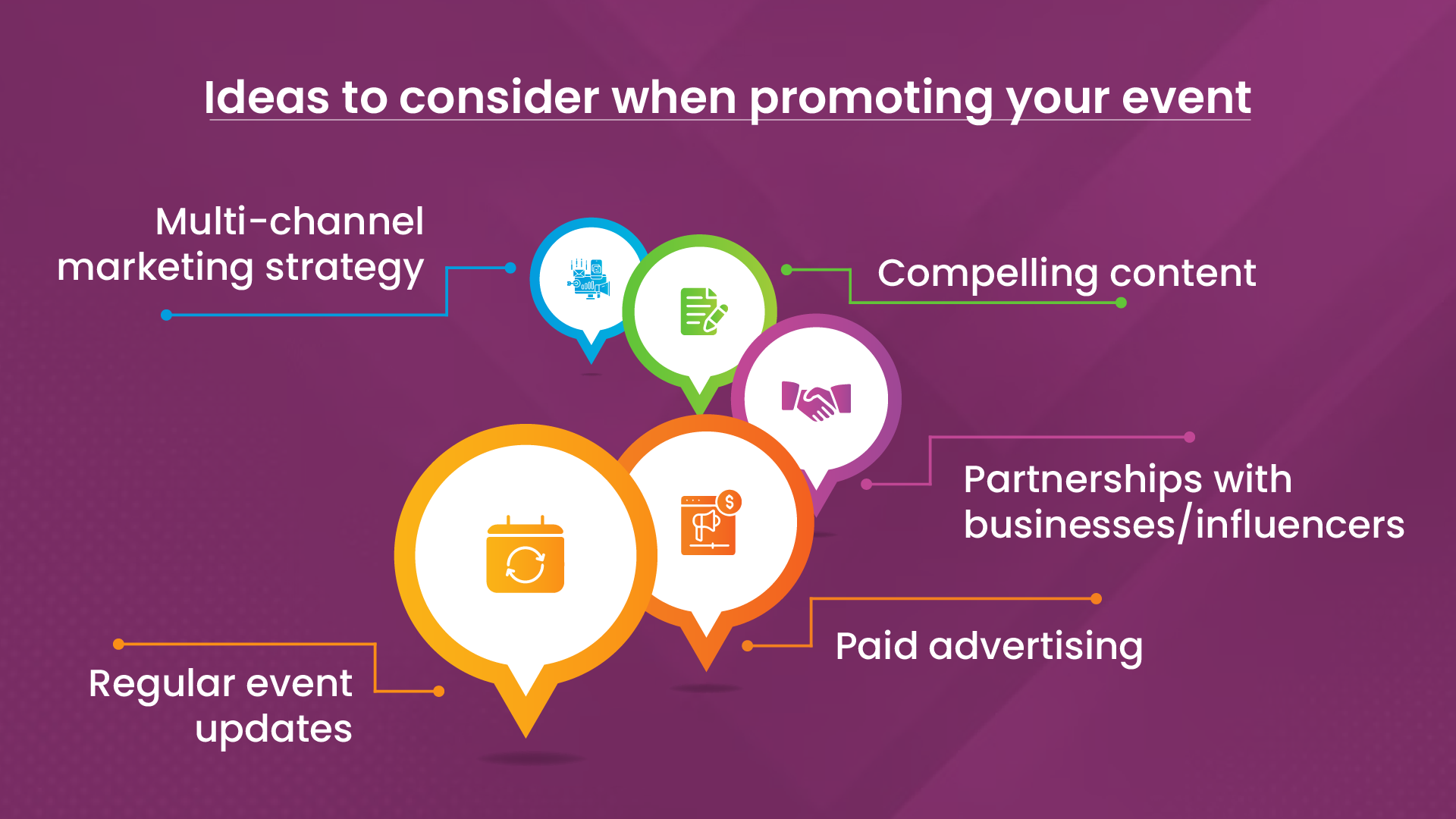
Effective promotion is key to maximizing attendance and engagement. Craft a multi-channel marketing strategy that includes social media, email marketing, press releases, and community outreach.
Create compelling content that highlights the event's purpose, activities, and benefits. Leverage partnerships with local businesses or influencers to expand your reach.
Consider utilizing paid advertising on platforms where your target audience is most active. Regularly update your audience with event details and exciting updates to maintain excitement.
Want more ideas on this? Here's an article just for you: 13 Actionable Tips On How To Promote An Event Successfully.
Step 10: Plan follow-up activities
The end of your event is just the beginning of its impact. Develop a strategy for post-event engagement and follow-up.
Thank attendees, sponsors, and volunteers for their contributions. Share the event's success stories and outcomes with your community and donors. Collect feedback to evaluate what worked well and areas for improvement.
Consider hosting thank-you events, workshops, or webinars to sustain the momentum and continue fostering connections with your audience.
Additional tips for better nonprofit event planning
As you gear up to bring your nonprofit event to life, fine-tuning your approach can make all the difference. Beyond the fundamental steps, consider these strategic insights to take your planning to the next level.
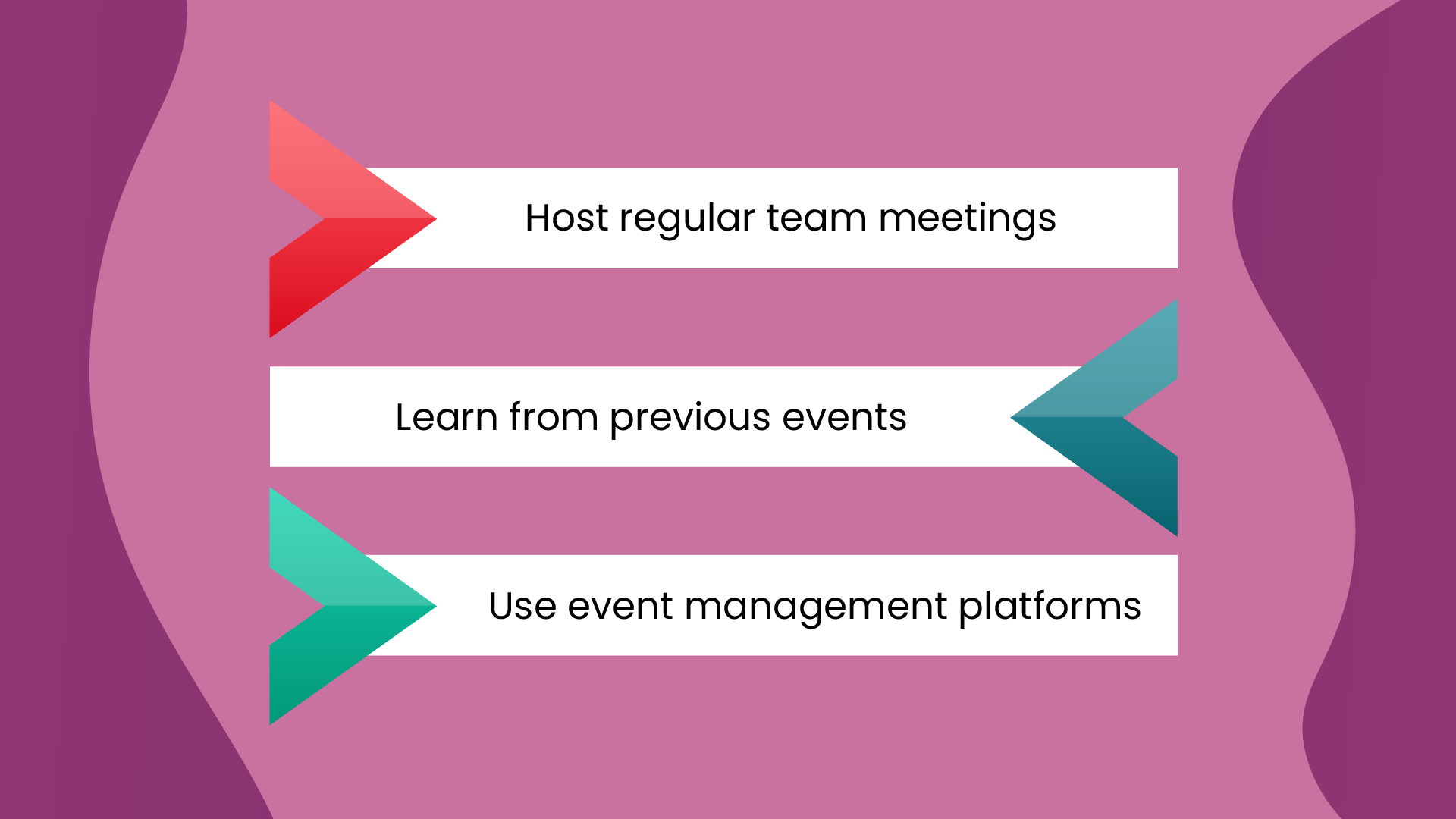
Host regular meetings with the planning team
Communication is the linchpin of a well-coordinated event. Schedule consistent meetings with your planning team to ensure everyone is aligned with objectives, timelines, and tasks.
These gatherings provide a platform for brainstorming, troubleshooting, and sharing updates.
Assign specific agenda items to each meeting, covering aspects like progress updates, challenges, and next steps. Encourage open dialogue and active participation to foster a collaborative and productive atmosphere.
Learn from previous events
History is a formidable teacher. Take the time to review past events to glean insights and identify areas for improvement.
Evaluate what worked well and what could be enhanced. Consider aspects like attendee feedback, fundraising outcomes, and logistical challenges. Use this information to refine your planning process for future events.
Leverage lessons learned to fine-tune strategies, optimize resource allocation, and enhance overall event experiences.
Make use of event management platforms
In today's digital age, event management platforms are invaluable tools for streamlined planning. Platforms like KonfHub offer a range of features, from online registration and ticketing to attendee tracking and data analytics.
Choose a platform that aligns with your event's specific needs and budget. Leverage its capabilities to streamline tasks, manage guest lists, and gain insights into attendee demographics and preferences.
Additionally, these platforms often provide robust communication tools to keep attendees informed and engaged in real-time.
Confused about where to start looking? Here's where you can find the Top 9 Best Event Management Platforms In 2023.
Speaking of robust and comprehensive event management platforms…
Make your nonprofit event planning easier with KonfHub
In the realm of event management, having the right tools at your disposal can be the difference between a good event and an exceptional one.
Enter KonfHub, your ultimate companion for seamless event planning, whether it's online, hybrid, or in-person. Here's why KonfHub stands out as a one-stop ticketing and event management platform.
Flexible Ticketing: Customize ticket types (Regular, Waitlist, Approval-based, and Hidden with access codes) and apply discounts to engage participants effectively.
Communication Solutions: Keep attendees informed and engaged with easy-to-use channels like WhatsApp, Email, and SMS.
Real-time Analytics: Gain valuable insights into ticket sales and marketing performance to adapt strategies for maximum impact.
Sponsor App: Simplify lead capture for sponsors by allowing them to scan attendee QR codes, facilitating meaningful interactions during and after the event.
…And so many more features that are designed to make your nonprofit event planning seamless and fun.
Schedule a demo with the team today to learn more about how KonfHub can enhance your nonprofit event planning experience today, whether online, hybrid, or in-person!
Subscribe to my newsletter
Read articles from KonfHub directly inside your inbox. Subscribe to the newsletter, and don't miss out.
Written by

KonfHub
KonfHub
KonfHub is an AI-powered, GDPR-compliant platform for seamless ticketing, secure attendee management, and smooth event operations. Say goodbye to complexity and hello to seamless, powerful event management!